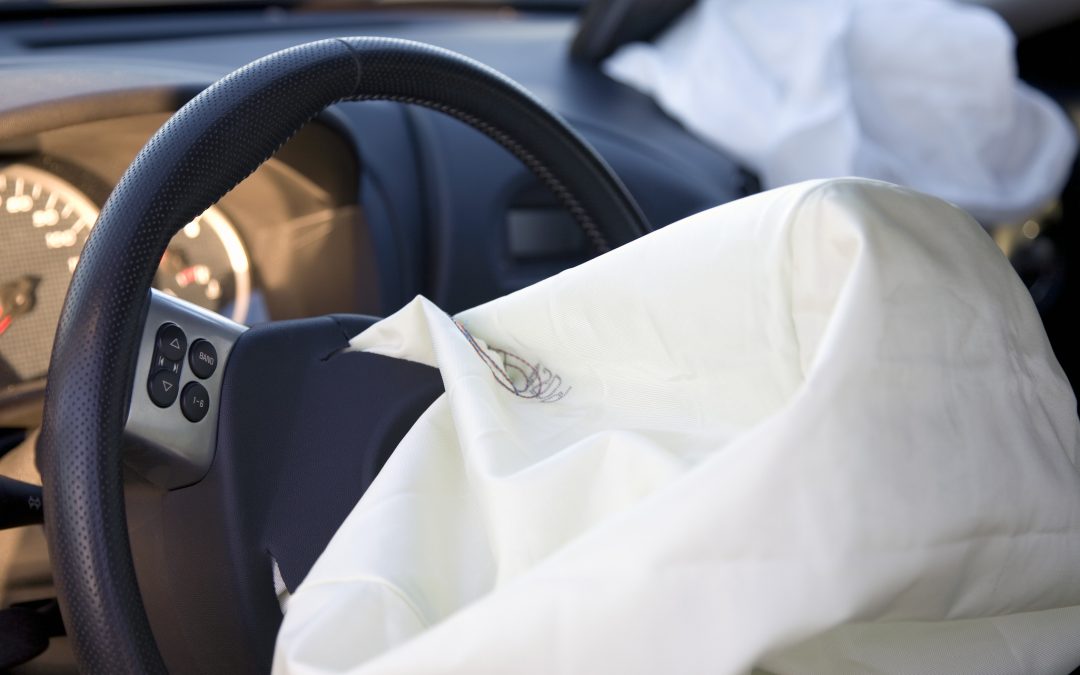Airbags are a legally required supplementary restraint system in all cars sold in the United States today (and they have been since 1995). It’s been proven that airbags save lives. The National Highway Traffic Safety Administration (NHTSA) states that frontal airbags have saved over 50,000 lives since 1987.
How Airbags React in a Crash
1. The car decelerates rapidly. When a car hits another object, it’s moving quickly, as is everything inside it, until the other object stops or slows the movement.
2. A crash sensor called an accelerometer detects the rapid change in speed.
3. The accelerometer determines whether the deceleration is rapid enough to trigger the airbag system.
4. The airbag system sends an electric current through a heating element near the airbag, similar to the way a toaster heats up.
5. The heating element ignites a controlled explosive.
6. The explosive burns and fills the airbag with a harmless gas. Usually made of nylon, the airbag bursts through its container (the steering wheel, dashboard, ceiling, or side panel) before the passenger hits it.
7. The passenger hits the inflated airbag. The force of the person hitting the bag causes it to deflate slowly through small holes near its base.
How is an airbag better than a steering wheel?
There are a few key elements to airbags and why they work.
First, they work because they’re released so quickly as the impact happens that they can prevent a passenger from making direct contact with the inside of the car. Airbags wouldn’t be protective if they didn’t get between the passengers and the point of impact.
Second, an airbag is a moving surface that softens, allowing it to absorb some of the force of the impact. The fact that an airbag deflates is key here. The deflating airbag allows the person to continue moving forward – at a slower rate – so that when they do stop moving, the stop is gentler. If an airbag didn’t deflate, hitting it would be hardly different from hitting a steering wheel or dashboard.
Airbags are designed for safety by the manufacturer.
It is always important to have airbags professionally replaced when they are deployed. A professional with access to your original equipment manufacturer (OEM) parts and the specific repair procedure will help keep your car as safe as possible.



